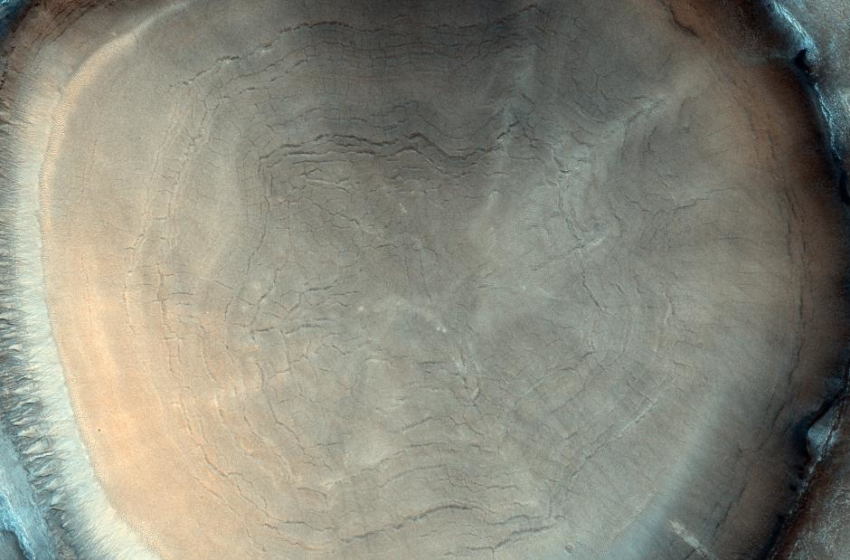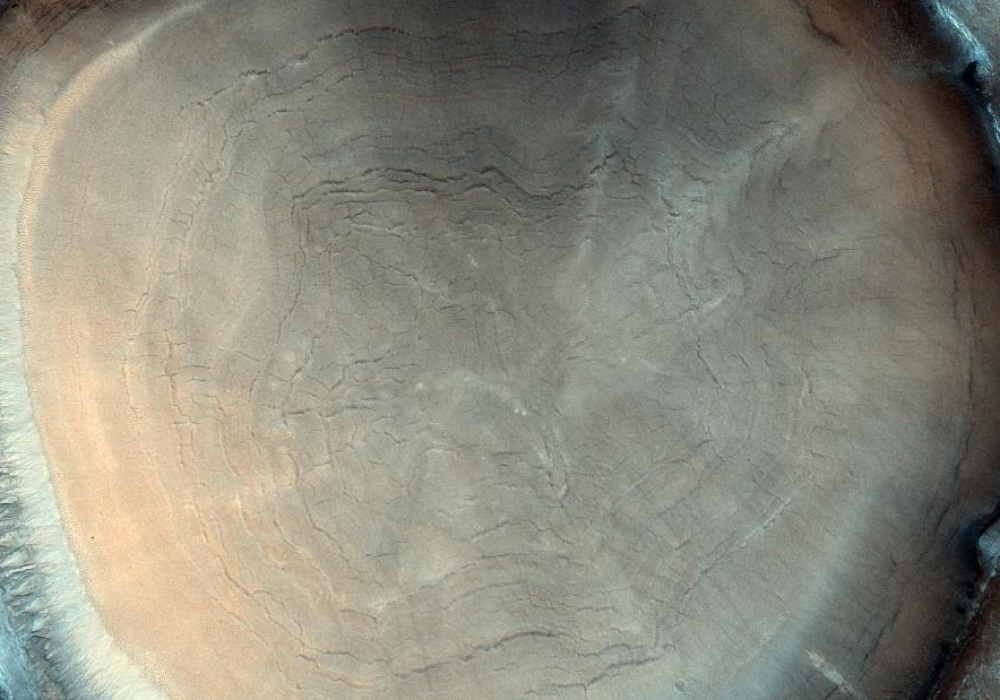The image was taken last year by the camera on board the ExoMars Trace Gas Orbiter, a spacecraft launched by ESA and Roscosmos, Russia’s space agency, that arrived at Mars in 2016 and began its mission in 2018.
The crater in the image is in an area of Mars known as Acidalia Planitia, the planet’s vast northern plains. It’s where the fictional astronaut Mark Watney was stranded in the novel and movie “The Martian.”
ESA said the interior of the crater is filled with deposits that probably contain ice.
“It is thought that these deposits were laid down during an earlier time in Mars’ history when the inclination of the planet’s spin axis allowed water-ice deposits to form at lower latitudes than it does today,” ESA noted in a statement released last week.
“Just like on Earth, Mars’ tilt gives rises to seasons, but unlike Earth its tilt has changed dramatically over long periods of time.”
Polygon- and semicircle-shaped fractures in the crater are likely a result of seasonal changes in temperature that caused the ice-rich material to expand and contract, ultimately causing the cracks.
As well as taking striking images of the red planet, the orbiter is cataloging gases in the Martian atmosphere and mapping the surface to find water-rich regions. This will help scientists get a better understanding of the history of water on Mars and whether it once allowed life to flourish.
The second part of the mission will get underway in 2023, when a new rover will explore a region of Mars thought to have once hosted an ancient ocean and search underground for signs of life, ESA said.












